The Fairlight Strael 3.0 sees a handful of meaningfully useful practical upgrades from the 2.0 version while retaining the delightfully sprightly yet comfortable ride quality and customisability of the original bike I found so beguiling when I tested it back in early 2017.
That original Fairlight Strael remains one of my all-time favourite steel disc-brake road bikes, so I was really excited to get the chance to test the new bike, and it has not disappointed.
Design details to thrill every bike nerd
Fairlight currently offers three bikes:
- Strael – steel road bike with carbon fork
- Faran – all-steel bikepacking/touring/randonneur/anything bike
- Secan – steel gravel bike with carbon fork
A second-generation Strael launched in late 2017. This saw a switch to thru-axles, a new dropout design and new cable guides, but the geometry remained the same.
Fairlight pitches the Strael 3.0 as a “four-season road bike”, offering ample clearances to take wide tyres and mudguards as well as neat dynamo light integration.

The new version of the bike has been in development for two years and sees:
- Tyre clearances boosted to 36mm
- A new Reynolds 853 down tube and custom-formed 725 chainstays
- New dropout designed in collaboration with Bentley Components (including a new replaceable mech hanger design)
- All-new Anraed 3.0 carbon fork with internal dynamo routing
- A third-bottle mount on the underside of the down tube
Looking at the bike, the most obvious change is to the rear end.
The bike now uses heavily shaped 418mm long Reynold’s 725 chainstays, produced exclusively for Fairlight.
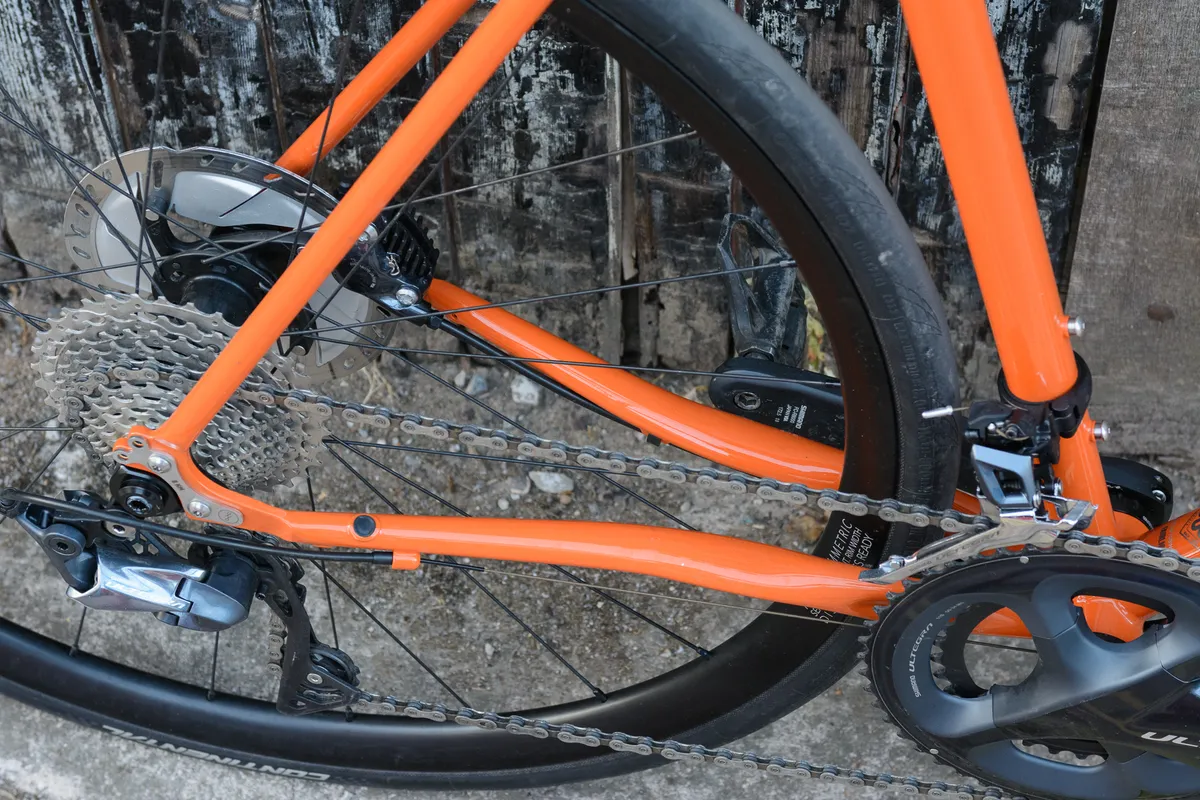
In the context of steel bikes, these really are quite remarkable. They are flattened and fairly broad on the horizontal plane while remaining narrow in the vertical plane.
They are also dimpled to provide clearance for up to a 36mm wide tyre and a full-size double crankset.
I genuinely haven’t seen anything like this on a steel bike before and, for what it’s worth, a few riding pals noted the same – they are very distinctive and really help the bike to stand out.
Fairlight points out the 36mm tyre clearance “is to provide extra comfort for long-distance and ultra-endurance cycling”, rather than making the bike a pseudo gravel bike (or 'gravel adjacent', as my colleagues love to say).
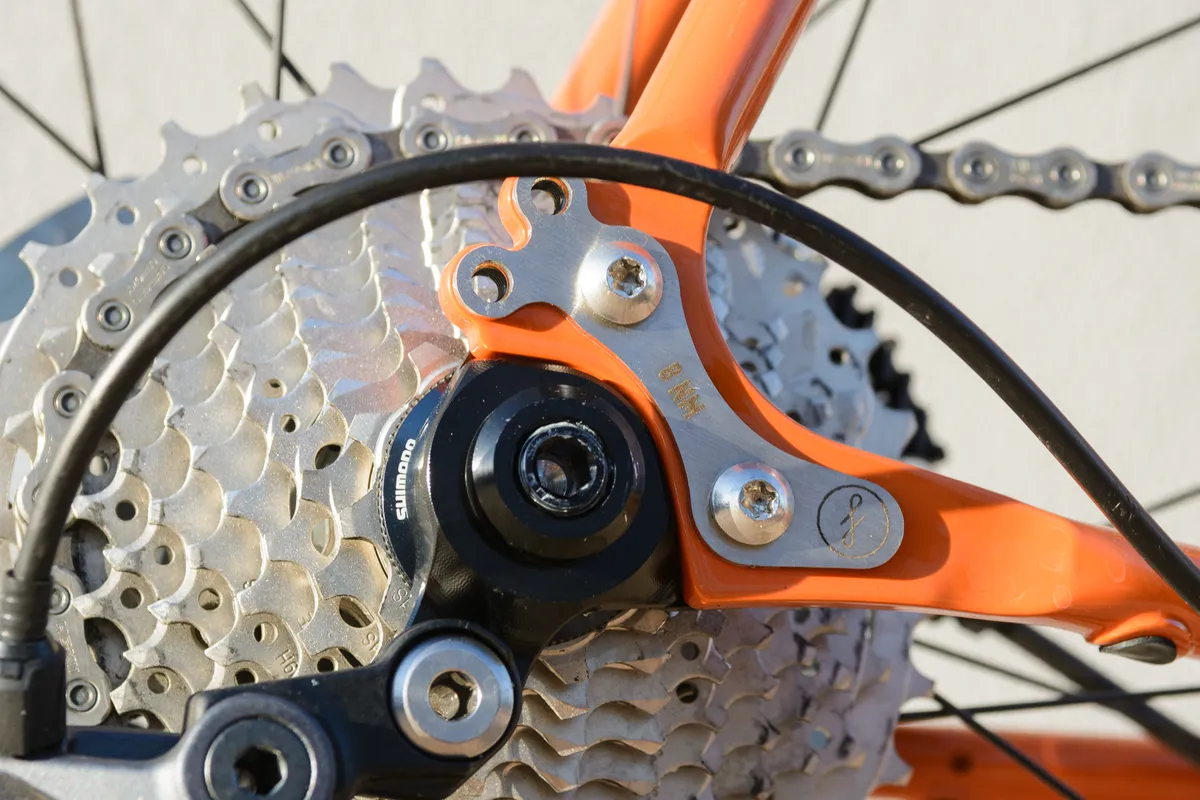
The bike has also adopted a new modular dropout designed in collaboration with Bentley Components.
On the non-driveside, the thru-axle housing and flat-mount disc mount are now integrated together in one near CNC-machined block of aluminium.
On the driveside, the axle housing and derailleur hanger are also one single unit.
Previously, Fairlight’s bikes stood out because they had stuck steadfastly with a fixed hanger, which is a relative rarity these days.
Dom Thomas, lead designer and co-founder of Fairlight, still believes fixed derailleur hangers present few disadvantages (and some advantages) over replaceable hangers but concedes it’s something the public had asked for, hence the switch.
A replaceable hanger also opens up the opportunity to use a direct-mount derailleur hanger. This could prove useful if this design (finally) sees widespread adoption with the eventual arrival of the new Shimano Dura-Ace Di2 R9200 groupset.
On the outside face of each side of the frame, custom stainless steel plates act as a washer for the dropout plates, but also protect the finish of the frame from chipping when fitting mudguards or pannier racks.
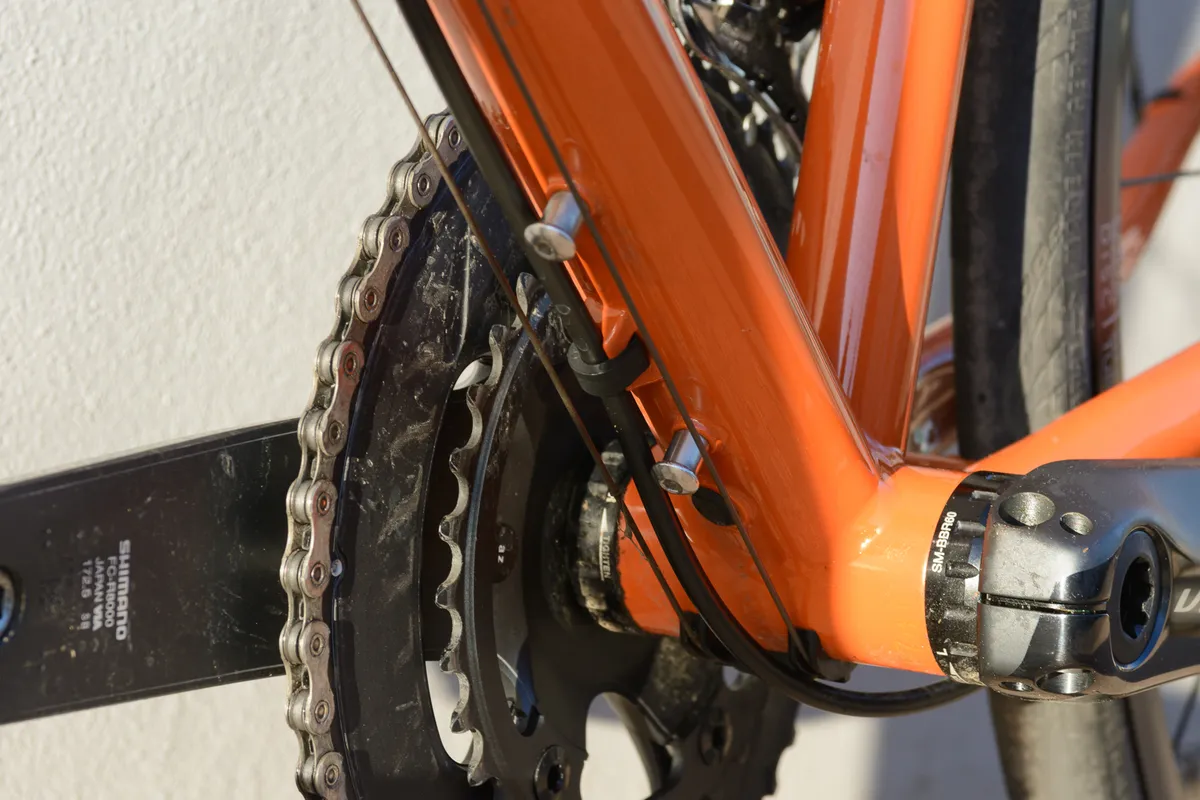
A third bottle cage mount has been added to the underside of the down tube. The bike helpfully ships with matching 8mm-tall washers here to ensure a cage will clear your brake hoses and gear cables.
On size 58 and 61cm frames, a third bottle cage eyelet is brazed in place above the original two. This is to ensure taller riders can place their cage higher so they do not have to reach excessively far to access a bottle.
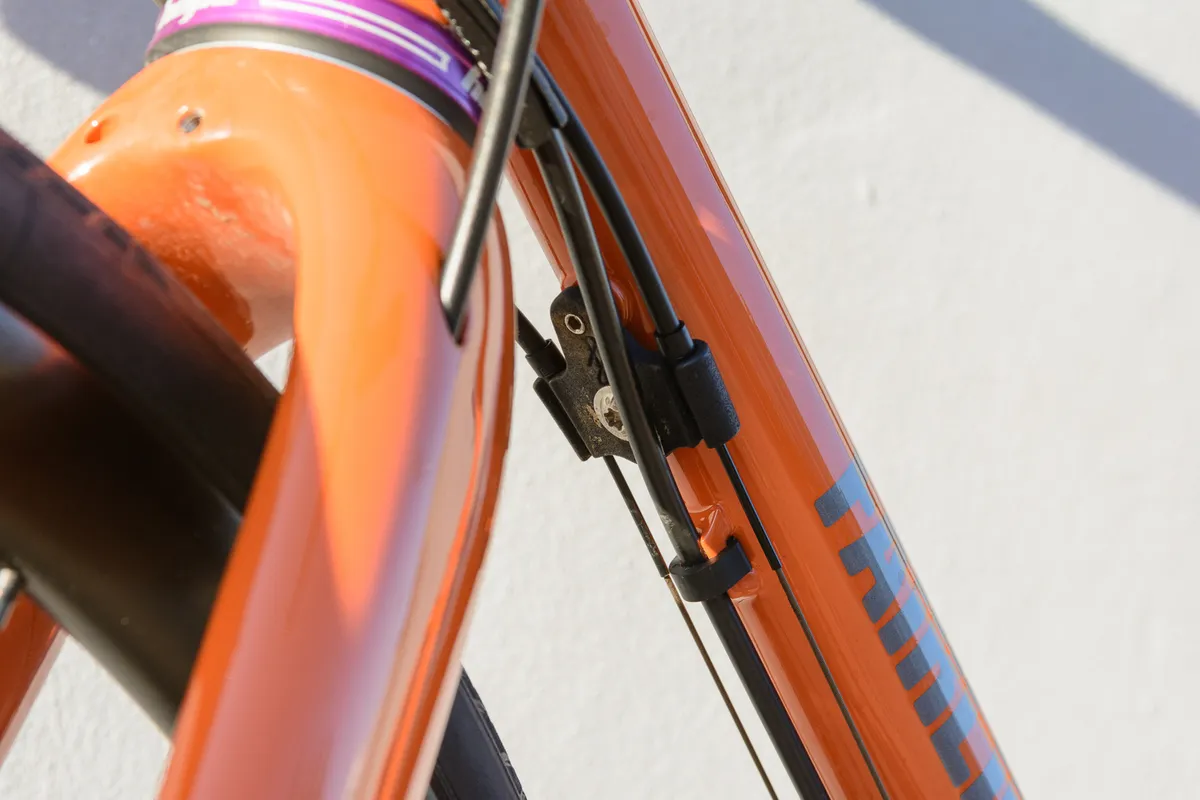
The new Strael retains the same modular 3D-printed cable guide system used across all of Fairlight's bikes.
This setup means any variation of drivetrain – wireless, cabled, 2×, 1× and so on – can be accommodated cleanly.
Fairlight continues to offer every size of its bikes in both Tall and Regular options as part of its proportional geometry concept. This adds up to ten different sizes across the range.
Tall bikes have a longer head tube and are best suited to those with long legs and a short torso. Regular bikes are for those with short legs and a long torso.
It’s exceptionally rare I would point a reader in the direction of a brand’s marketing spiel in a review but, if you’re interested in scrutinising every detail of the new bike, Fairlight’s Strael 3.0 design notes and lookbook are absolutely worth a read.
These are now created for each new model the brand produces and clearly outline every design decision in genuinely interesting, near-compulsive detail – it really is catnip for bike nerds like me.
Of course, having this info doesn’t make a bike any better (or worse) but, for those who care about the provenance of the things they buy, these guides will instil confidence.
At a more practical level, these documents also give a clear indication of what different builds will look like and outline the limits of the frameset.
This level of detail is often infuriatingly hard to come by in the cycling industry, and is rarely presented in an interesting way, so deserves praise.
Customisation options worth celebrating

Each bike from Fairlight is built to order.
The key advantage of a custom build is that you should be able to get close to your optimum fit straight out of the box (offering such a broad range of sizes also helps).
Handlebar width and stem length are two key determinants of bike fit and brands that offer the option to spec these are in a very small minority, so hats off to Fairlight here.
The custom build process also means you can specify your groupset, wheelset, tyres, finishing kit and any additional accessories.
The stock spec options will suit the needs of 99 per cent of riders but, if you are an outlier, I have no doubt Fairlight will accommodate your esoteric requests.
My Strael 3.0 test bike was built around a Shimano Ultegra R8000 groupset, a pair of Hunt 4 Season disc wheels, 28mm-wide Continental GP5000 tyres, and a sensible mix of FSA Energy, Gossamer and K-Force FSA finishing kit, topped with a Charge Spoon saddle.
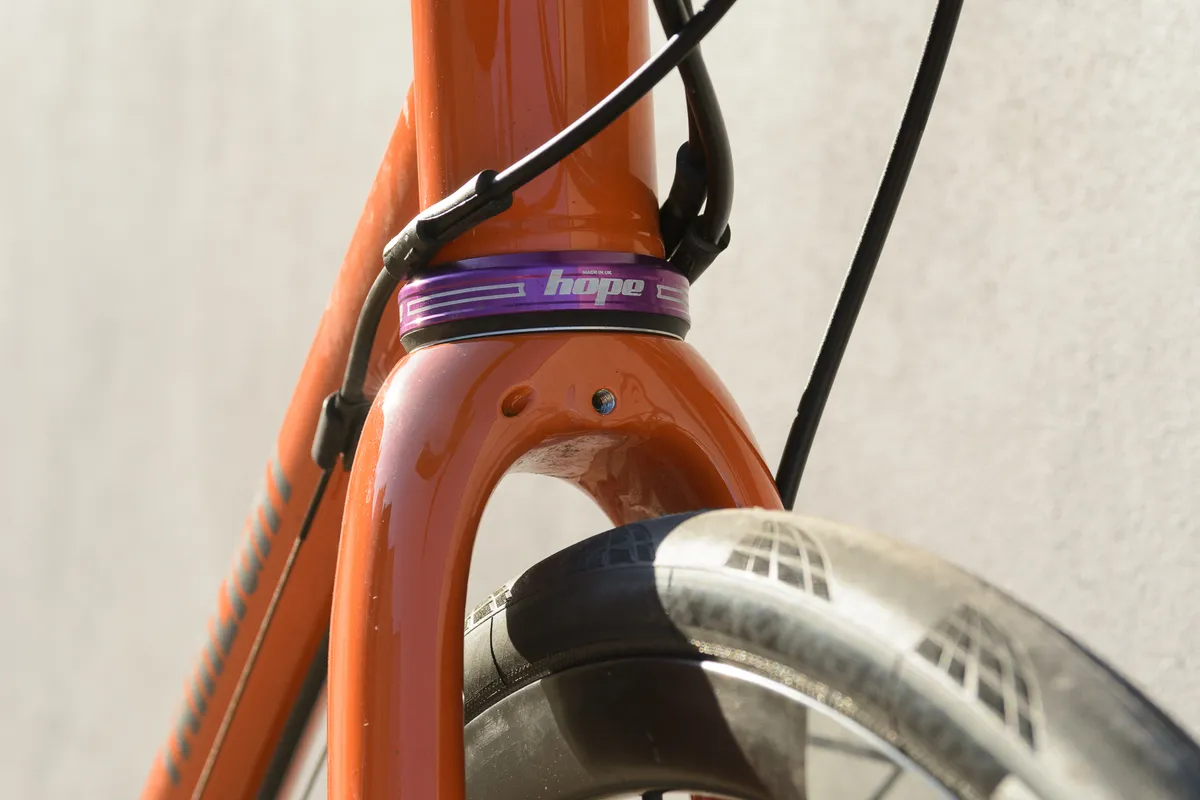
An optional purple Hope headset and seat clamp upgrade (£65) was also thrown in because I simply couldn’t resist the resulting purple/burnt orange colour combo.
A delightful companion
The ride of the Strael is best summarised as comfortable, predictable and unobtrusive.
Don’t read that as ‘boring’, though – this is no touring trundle wagon, and the Strael is a real hoot to ride fast, but its cosseting steel frameset does a wonderful job of smoothing out harsh bumps and road buzz on long rides.
I’m inclined to believe Fairlight’s claim that this is largely due to the notably ovalised top tube.
Compared to a conventional round tube, this allows the frame to flex more easily in response to pedalling forces and impacts on rough terrain while maintaining lateral rigidity.
(This effect is sometimes known as ‘planing’. Jan Heine, who coined the term, has a good explainer on the subject.)
The Strael 3.0 frameset is fairly unyielding for a steel bike when climbing out of the saddle. It doesn’t have the rock-solid feel of a carbon race bike (nor does it intend to), but it also isn’t as squishy as a traditional skinny round-tubed steel bike such as my All-City Mr Pink.
The bike holds its line well on rough roads or gravel trails and doesn’t take a lot of mental energy to reign in on fast and twisty paved descents, which is exactly what you want from a bike like the Strael.
It’s important to stress once again that I’ve never ever ridden an unpredictable or difficult to control road bike, but all bikes do sit on a spectrum of stability and reactiveness. The Strael definitely falls into the former camp.

My most memorable outing on the Strael was Rapha’s A Day in Hell – a Paris-Roubaix tribute ride of sorts that took in the best roads and gnarliest secteurs over 140km of riding in the Cotswold Hills.
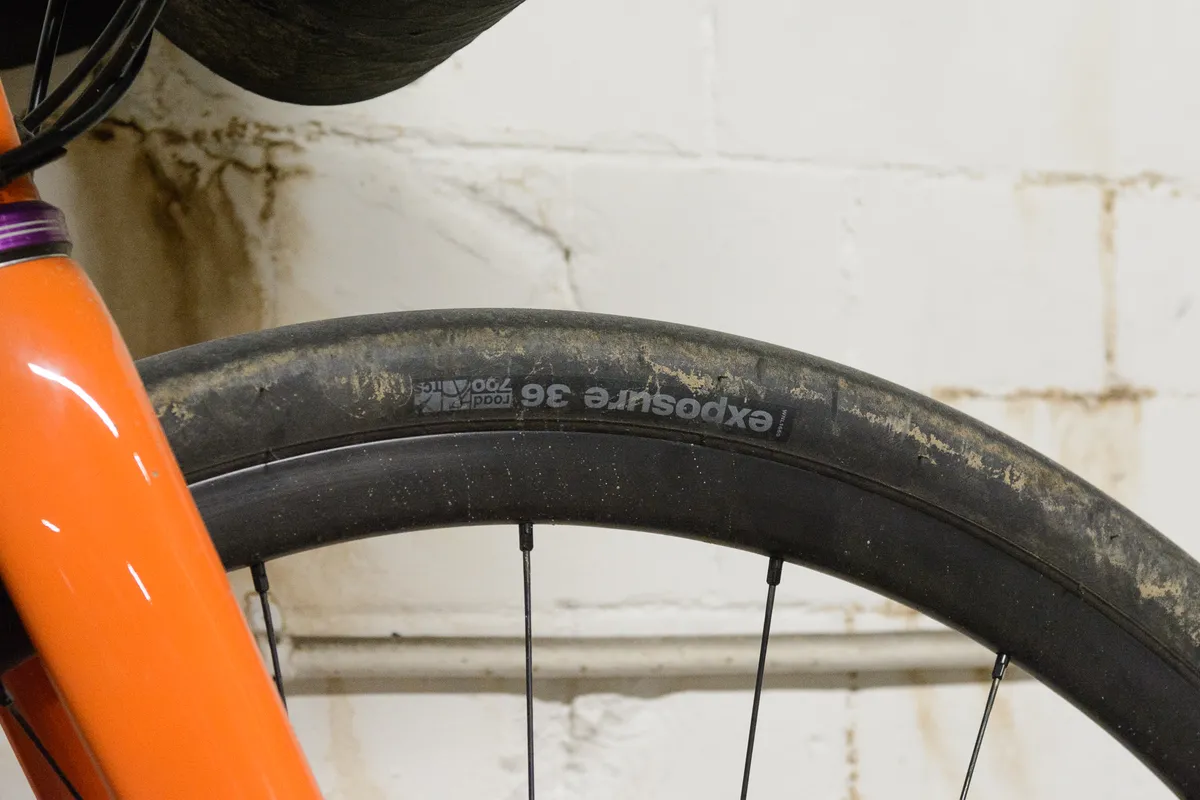
For this, I swapped the GP5000 tyres in favour of a pair of 36mm-wide WTB Exposure tyres. These measured 37.5mm when mounted and had a nice round profile, providing a useful amount of additional squish on the off-road sections without giving up too much in terms of rolling resistance on the road.
The bike really shone for me with this combo – the bike still handles really nicely with fat tyres and I could confidently smash about broken farm tracks without hesitation (enough to bag me a very rare KOM I might add!).
If the conditions had been wetter, I would probably have preferred a narrower tyre with a small amount of tread. Though I was pushing the official tyre clearances a touch, the WTB tyres had enough room on that bone-dry spring day, but I wouldn’t be so keen to push my luck in muddy conditions.
I ended up sticking with the Exposures for a good chunk of my testing (what can I say – I’m a man who likes a cheeky gravel diversion) before switching back to the GP5000s.
This is true of any bike but the difference between the two tyres is stark, and totally changed the character of the bike from a confident all-rounder to something much more sprightly.
I will echo Fairlight’s sentiment that this is not a gravel bike but, if you want something that will handle gentle off-road excursions with little compromise, a Strael × fat tyres collabo is a delectable choice.
Compared to other steel bikes I have ridden, the Strael is close in character to the Mason Resolution2, though I think the Fairlight is probably the more comfortable bike overall. We’re talking about very marginal differences here though and, if you’re in the market for a bike like this, I have no doubt either would make you happy.
A bike for life?
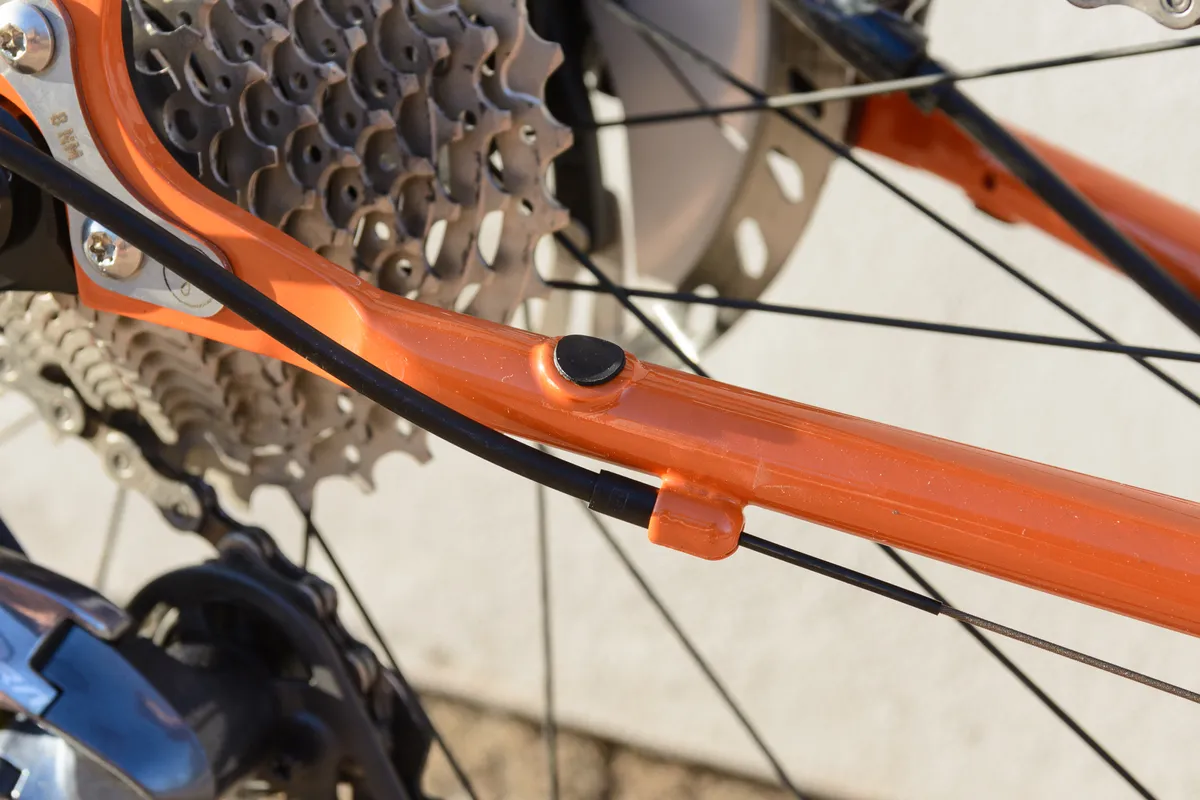
Tyre clearance is only a small part of a bike’s overall versatility and, in this regard, the Strael stands out.
You have the option to run mudguards, a rear pannier rack, dynamo lights and wired or wireless electronic groupsets.
The modular dropout system also means if the industry at large decides a 11.99mm threaded thru-axle is simply better in every way compared to the existing 12mm standard (I jest but stranger things have happened), Fairlight should be able to accommodate these changes.
Provided the nature of your riding doesn’t change, this really is a bike that you will be able to adapt to your needs over time.
On the subject of dynamo lights, if you don’t fancy stretching the limits of your mechanical abilities, Fairlight will also fit and install a SON dynamo light setup to your specification at the time of ordering.
Speaking from experience, this is a very labour-intensive process. If you’re toying with the idea of trying a dynamo setup, I implore you to consider having a brand do the hard work for you.

The new Anraed fork has really neat fully-sleeved internal routing for a dynamo cable. The exit port for this is angled such that the cable is kept away from the front tyre, which is a nice touch.
Elsewhere, neat ports allow cables to be routed through the frame.
The exception is at the bottom bracket shell. The Strael uses a standard ISO threaded bottom bracket shell. For those running a 30mm or SRAM DUB spindle crankset and a rear dynamo light, you will have to route the cable externally around the bottom bracket shell via the ports on the underside of the down tube. For standard 24mm axles, you can route the cable internally.
Back on the fork, the horizon-chasing fool in me still wishes the bike had mid-fork eyelets to allow the use of a small rack and a traditional boxy randonneur bag, but I absolutely understand the rationale behind foregoing these.
Rack mounts require a carbon fork to be overbuilt to pass ISO testing and, compared to bar-mounted handlebar bags, randonneur bags are a very niche option that would only appeal to a handful of buyers. For those riders, the Faran or Secan are probably a better choice.
Fairlight Strael 3.0 review conclusion
Overall, the new Fairlight Strael 3.0 presents subtle but worthwhile upgrades compared to the previous generation bike.
It’s lovely to ride, it’s impeccably well finished, it’s really adaptable and is made by a company that puts transparency at the front of everything it produces.
While transparency doesn’t make for a better or worse product, I sincerely believe it adds value for those that care about how things are designed and made.
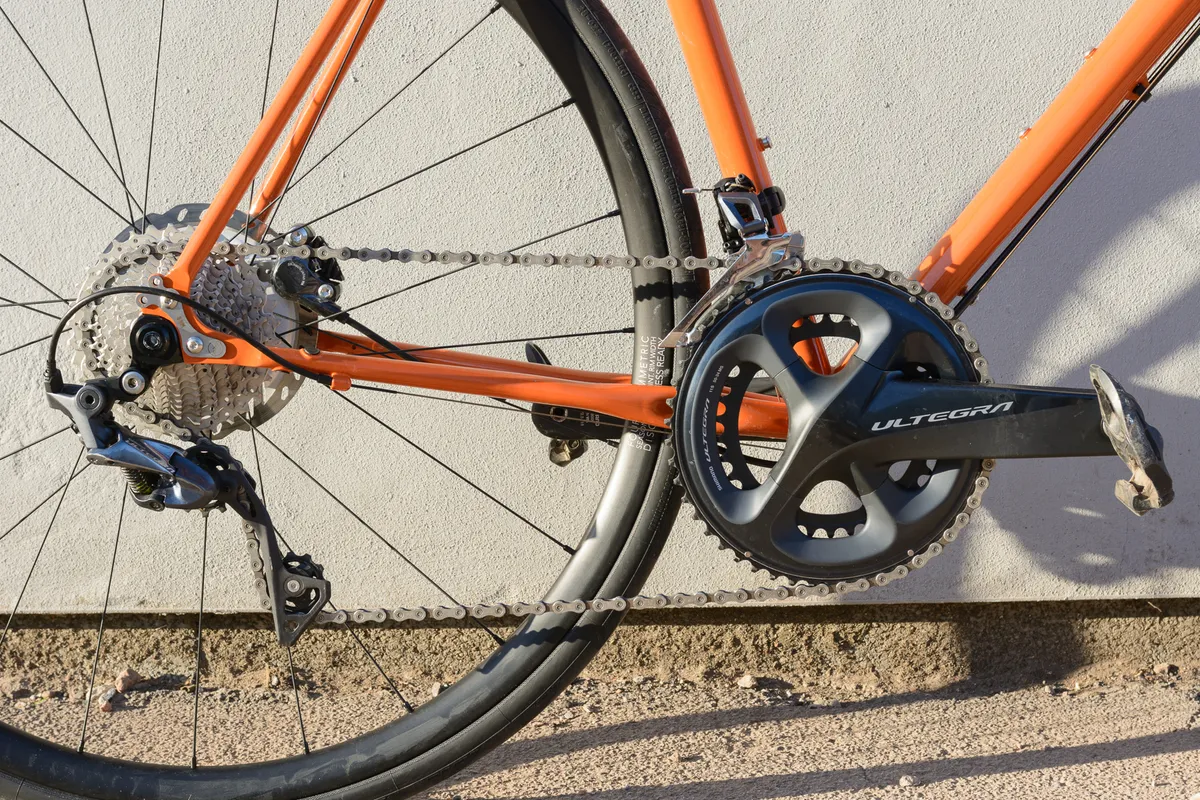
Somewhat remarkably for a small brand, the Strael 3.0 is also pretty good value for money as a complete bike, if you consider the build alone.
With the optional £65 Hope headset and seat clamp upgrade, my bike as pictured would set you back £2,964.
Looking back through BikeRadar’s recent-ish road bike reviews (of any genre), only the Boardman SLR 9.2, Planet X Pro Carbon Ultegra and the Merida Reacto 6000 beat the Fairlight. For such a small brand to even get within striking distance of these huge brands is pretty remarkable.
Bear in mind you also get the option to spec finishing kit to suit you. This is a true value add because it means you shouldn’t have to swap any components on delivery.
As a frameset alone, the Strael 3.0 is also very competitively priced – at just £1,299, it undercuts many of its competitors, including some from larger brands that produce far, far more bikes.
Finally, it comes in some truly fabulous paint options, the importance of which cannot be overstated.
All of this considered and with the benefit of having ridden a fair few bikes of its ilk, the Fairlight Strael 3.0 would be my pick of the steel disc brake road bikes on the market today.
I simply cannot imagine wanting more of a steel road bike and I will be very sad to see this one go.
Product
| Brand | Fairlight |
| Price | £2899.00 |
| Weight | 9.18kg |
Features
| Fork | Fairlight Anraed 3.0 |
| Stem | FSA Energy |
| Frame | Fairlight Strael 3.0 All Season Road |
| Tyres | Continental GP5000 28mm |
| Brakes | Shimano Ultegra R8070 |
| Cranks | Shimano Ultegra R8000 50:34 |
| Saddle | Fabric Scoop Shallow Elite |
| Wheels | Hunt 4 Season Disc 24/24 |
| Headset | Hope (optional upgrade) |
| Shifter | Shimano Ultegra STR8020 |
| Cassette | Shimano Ultegra R8000 11-34 |
| Seatpost | FSA SL-K carbon 27.2mm |
| Grips/tape | Pro Pu SL |
| Handlebar | FSA Gossamer Compact |
| Available sizes | 51R, 51T, 54R, 54T, 56R, 56T, 58R, 58T, 61R, 61T |
| Rear derailleur | Shimano Ultegra R8000 GS |
| Front derailleur | Shimano Ultegra R8000 |
